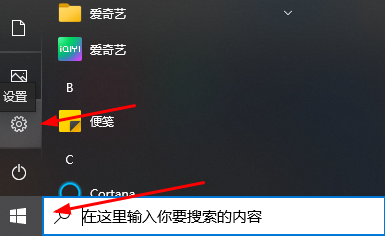Java is a widely used object-oriented programming language. Its powerful multi-threading capabilities enable developers to implement efficient and concurrent programs. However, multi-threaded programming also brings many thread safety issues, such as race conditions, deadlocks, etc. In Java development, dealing with thread safety issues is a very important task.
- The concept and meaning of thread safety
Thread safety means that in a multi-threaded environment, when multiple threads access a shared resource at the same time, incorrect results or data corruption will not occur. Thread-safe code avoids data races and concurrency problems.
The significance of thread safety is to ensure the correctness and stability of the program. In a multi-threaded environment, if thread safety issues are not properly handled, it may lead to data loss, memory leaks, program crashes and other problems.
- Thread safety issues in Java
In Java, thread safety issues mainly include the following aspects: - Racing conditions: multiple threads working on the same shared resource at the same time Perform read and write operations, resulting in uncertainty in the results.
- Improper use of locks: The lock is not used correctly or the lock granularity is too large or too small, resulting in mutual blocking between threads or performance degradation.
- Deadlock: Multiple threads are waiting for each other to release resources, causing the program to be unable to continue execution.
- Data synchronization problem: In a multi-threaded environment, the reading and writing order of shared data is incorrect, resulting in data inconsistency.
- Methods to deal with thread safety issues
In order to deal with thread safety issues, Java provides a variety of mechanisms.
3.1 Using the synchronized keyword
The synchronized keyword is one of the most commonly used methods to deal with thread safety issues in Java. By adding the synchronized keyword to a method or code block, the code block can be locked to ensure that only one thread can execute at the same time.
public synchronized void method() {
// 线程安全的代码
}3.2 Using ReentrantLock
ReentrantLock is an explicit lock provided in Java, which achieves synchronization between threads by manually acquiring and releasing locks. Compared with the synchronized keyword, ReentrantLock provides more flexibility and functions, such as reentrancy, interruptibility, etc.
Lock lock = new ReentrantLock();
lock.lock();
try {
// 线程安全的代码
} finally {
lock.unlock();
}3.3 Using thread-safe data structures
Java provides some thread-safe data structures, such as ConcurrentHashMap, ConcurrentLinkedQueue, etc. These data structures are implemented using various locks and synchronization mechanisms to ensure thread safety and improve concurrency performance.
3.4 Use the volatile keyword
The volatile keyword is used to modify variables to ensure the visibility and consistency of variables. In a multi-threaded environment, variables modified with the volatile keyword can ensure that each thread can see the latest value of the variable.
- Some Notes
When dealing with thread safety issues, there are some details that need to be paid attention to:
4.1 The granularity of the lock
The granularity of the lock should be Keep it as small as possible and only lock it when necessary. Excessively large lock granularity will cause blocking between threads and reduce program performance.
4.2 Avoid deadlock
When writing multi-threaded code, pay attention to avoid deadlock. To avoid deadlock, you can use the tryLock() method to try to acquire the lock and give up after the timeout.
4.3 Data Synchronization
In a multi-threaded environment, the reading and writing of shared data must be correctly synchronized to ensure the orderliness and consistency of reading and writing operations.
- Summary
Dealing with thread safety issues is a very important part of Java development. By using the synchronized keyword, ReentrantLock, thread-safe data structures, and reasonable lock granularity, we can effectively solve thread safety issues such as race conditions and deadlocks in multi-threaded environments. When writing multi-threaded code, we should always pay attention to thread safety and follow relevant best practices to ensure the correctness and stability of the program.
The above is the detailed content of How to handle thread safety in Java?. For more information, please follow other related articles on the PHP Chinese website!
 解决win11中同时播放耳机和音响的问题Jan 06, 2024 am 08:50 AM
解决win11中同时播放耳机和音响的问题Jan 06, 2024 am 08:50 AM一般来说,我们只需要同时使用耳机或者音响的其中一个设备,但是有些朋友反映在win11系统中,遇到了耳机和音响一起响的问题,其实我们可以在realtek面板中将它关闭,就可以了,下面一起来看一下吧。win11耳机和音响一起响怎么办1、首先在桌面上找到并打开“控制面板”2、进入控制面板,在其中找到并打开“硬件和声音”3、然后再找到一个喇叭图标的“Realtek高清晰音频管理器”4、选择“扬声器”再点击“后面板”进入扬声器设置。5、打开之后我们可以看到设备类型,如果要关闭耳机就取消勾选“耳机”,如果要
 您同步的文件夹中的一个或多个项目不匹配Outlook错误Mar 18, 2024 am 09:46 AM
您同步的文件夹中的一个或多个项目不匹配Outlook错误Mar 18, 2024 am 09:46 AM当您在您的同步文件夹中发现一个或多个项目与Outlook中的错误消息不匹配时,这可能是因为您更新或取消了会议项目。这种情况下,您会看到一条错误消息,提示您的本地数据版本与远程副本存在冲突。这种情况通常发生在Outlook桌面应用程序中。您同步的文件夹中的一个或多个项目不匹配。若要解决冲突,请打开这些项目,然后重试此操作。修复同步的文件夹中的一个或多个项目不匹配Outlook错误在Outlook桌面版中,当本地日历项与服务器副本发生冲突时,可能会遇到问题。不过,幸运的是,有一些简单的方法可以帮助您
 MySql的数据迁移和同步:如何实现多台服务器之间的MySQL数据迁移和同步Jun 15, 2023 pm 07:48 PM
MySql的数据迁移和同步:如何实现多台服务器之间的MySQL数据迁移和同步Jun 15, 2023 pm 07:48 PMMySQL是一个非常流行的开源关系型数据库管理系统,广泛应用于各种Web应用、企业系统等。在现代业务的应用场景下,大多数的MySQL数据库需要部署在多台服务器上,以提供更高的可用性和性能,这就需要进行MySQL数据的迁移和同步。本文将介绍如何实现多台服务器之间的MySQL数据迁移和同步。一.MySQL数据迁移MySQL数据迁移指的是将MySQL服务器中的数
 教你如何将win10剪贴板与手机同步Jan 06, 2024 am 09:18 AM
教你如何将win10剪贴板与手机同步Jan 06, 2024 am 09:18 AMwin10剪贴板有个非常好用的功能就是跨设备云储存功能,非常的好用可以帮助用户PC设备和手机设备同步复制黏贴。设置的方法非常简单,只要在系统里的剪切板设置就好。win10剪贴板同步到手机1、首先点击左下角的开始,进入设置。2、然后去点击“系统”。3、选择左侧的“剪贴板”。4、最后在右边的“跨设备同步”中点击登录,然后选择手机就好了。
 如何在 Windows 11 的 OneDrive 中选择要同步的特定文件夹Apr 13, 2023 pm 04:22 PM
如何在 Windows 11 的 OneDrive 中选择要同步的特定文件夹Apr 13, 2023 pm 04:22 PM您系统上的 OneDrive 应用程序将所有文件和文件夹存储在云端。但有时用户不希望某些文件或文件夹被存储并占用限制为 5 GB 的 OneDrive 空间而无需订阅。为此,OneDrive 应用程序中有一个设置,允许用户选择要在云上同步的文件或文件夹。如果您也在寻找这个,那么这篇文章将帮助您在 Windows 11 系统的 OneDrive 中选择要同步的文件夹或文件。如何在 Windows 11 的 OneDrive 中选择要同步的某些文件夹注意:确保 OneDrive 应用程序已连接并同步
 Python 并发编程中的锁与同步:保持你的代码安全可靠Feb 19, 2024 pm 02:30 PM
Python 并发编程中的锁与同步:保持你的代码安全可靠Feb 19, 2024 pm 02:30 PM并发编程中的锁与同步在并发编程中,多个进程或线程同时运行,这可能会导致资源争用和不一致性问题。为了解决这些问题,需要使用锁和同步机制来协调对共享资源的访问。锁的概念锁是一种机制,它允许一次只有一个线程或进程访问共享资源。当一个线程或进程获得锁时,其他线程或进程将被阻止访问该资源,直到锁被释放。锁的类型python中有几种类型的锁:互斥锁(Mutex):确保一次只有一个线程或进程可以访问资源。条件变量:允许线程或进程等待某个条件,然后获取锁。读写锁:允许多个线程同时读取资源,但只允许一个线程写入资
 emmo日记如何同步Feb 27, 2024 pm 06:16 PM
emmo日记如何同步Feb 27, 2024 pm 06:16 PMEmmo是一款出色的日常生活记录软件,它提供了智能的记录功能和各种实用工具,帮助你详细记录生活中的点点滴滴。如果你想全面记录每天发生的事情,Emmo绝对是你的不二之选。通过这款软件,你可以在手机上轻松完成每天的日记,而且功能非常全面,满足你的各种需求。那么很多用户们还不清楚emmo日记中究竟该如何同步自己的日记,让大家在不同的设备中都能续写日记,想要了解的玩家们就快来跟着本文继续阅读吧。emmo心情日记怎么同步?1、点击左下角的菜单键2、登录你的账号3、退回到主界面,点击右上角的云朵按钮4、点击
 百度云同步盘怎么同步Feb 23, 2024 pm 01:22 PM
百度云同步盘怎么同步Feb 23, 2024 pm 01:22 PM百度云同步盘怎么同步?百度云同步盘中可以选择文件来同步,但是多数的用户不知道如何同步百度云文件,接下来就是小编为用户带来的百度云同步盘同步方法图文教程,感兴趣的用户快来一起看看吧!百度云同步盘怎么同步1、首先进入电脑桌面,右键点击【百度云同步盘】图标,选择【设置】;2、之后展开服务小窗口,切换到【高级设置】页面点击【选择文件夹】;3、最后切换到下图的页面,勾选需要同步的文件点击【确定】即可。


Hot AI Tools

Undresser.AI Undress
AI-powered app for creating realistic nude photos

AI Clothes Remover
Online AI tool for removing clothes from photos.

Undress AI Tool
Undress images for free

Clothoff.io
AI clothes remover

AI Hentai Generator
Generate AI Hentai for free.

Hot Article

Hot Tools

Notepad++7.3.1
Easy-to-use and free code editor

SAP NetWeaver Server Adapter for Eclipse
Integrate Eclipse with SAP NetWeaver application server.

EditPlus Chinese cracked version
Small size, syntax highlighting, does not support code prompt function

PhpStorm Mac version
The latest (2018.2.1) professional PHP integrated development tool

SublimeText3 Chinese version
Chinese version, very easy to use






